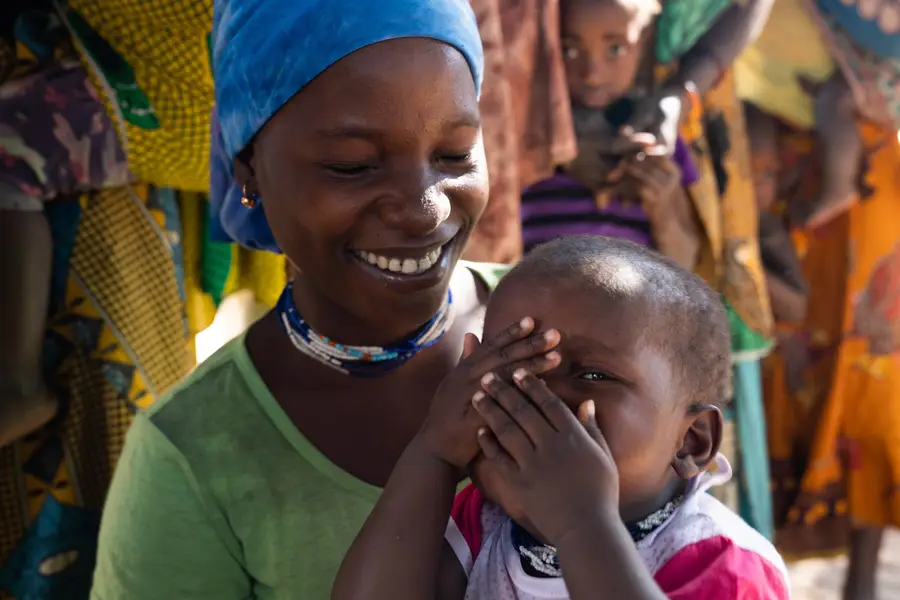
Photo: Damien Schumann for RTI International
Mosquitos may be small, but their impact on global health is huge. Billions of people around the world are at risk of contracting the diseases they spread. And every year, nearly 700,000 people die from mosquito-borne diseases. Many of these diseases are preventable.
This World Mosquito Day, we’re highlighting collaborative approaches to reducing the risk that mosquitoes pose in low-income countries, where resources to prevent and treat mosquito-borne diseases are constrained. We spoke with Julie Niemczura, RTI’s Malaria Practice Lead, about the current state of health systems efforts and innovations in this area.
Q: What are some common mosquito-borne diseases in low-income countries and why are they such a problem?
Even if someone doesn’t die from a mosquito-borne disease like malaria, they may experience severe disability for the rest of their life and loss of earnings. Diseases like lymphatic filariasis, Japanese encephalitis, West Nile virus, and chikungunya virus are major culprits of disability as they cause severe and debilitating swelling that affects people’s brains and bodies. This is particularly troubling in areas experiencing poverty, where loss of income from any family member can have catastrophic consequences for a household’s resilience and well-being. The health systems in these areas are often underfunded and underdeveloped, leaving people without prevention and treatment options. The disease burden in these countries and communities tends to be highest as a result. Mosquitos know no boundaries, so an outbreak of disease in one area can quickly spread to other areas as well. Changing weather patterns also mean mosquitoes are finding new areas in which to live and breed, spreading diseases they carry to new geographies.
Q: What options are available to stop these diseases and why aren’t they more widely available?
During the past two decades, governments, donors, and partners have achieved dramatic reductions in the burden of mosquito-borne disease through critical investments in health systems. These investments include population-wide prevention such as widely distributing preventive drugs and seasonal treatments, diagnosis and prompt and effective treatment, and environmental control methods like reducing mosquito breeding with insecticides in high-risk communities. However, the level of health system investment hasn’t kept pace with threats to progress like insecticide resistance and intensified spread of mosquito-borne disease. World Health Organization member countries and funding partners have mobilized only about half of the estimated US$7.8 billion required to stay on track to end malaria, for example, not to mention the funding shortfall for a host of neglected tropical diseases (NTDs) transmitted by mosquitoes.
Q: What does the future of prevention and treatment look like?
Resource constraints have driven health systems to innovate. One trend has been toward greater integration of health programming. That means instead of stand-alone malaria programs, for example, we’re seeing integration across malaria, maternal and child health, NTDs, and other health programs to find efficiencies and maximize limited resources. RTI-implemented health systems strengthening programs like the USAID Owod project in Senegal and USAID Notre Santé project in Guinea are at the forefront of this new approach.
While integrated health programs offer the potential for gains in efficiency, the transition away from deeply entrenched vertical disease control programs can be challenging to operationalize. For its part, RTI is constantly identifying ways to make the delivery of public health services more efficient through integration and partnerships.
Q: What are some examples of integration in action?
A natural fit for collaboration and integration of disease control priorities is between malaria and lymphatic filariasis (an NTD). Insecticide-treated bed nets can reduce the burden of both diseases as they prevent mosquitos from biting people. In Mozambique, as in many other countries, malaria or vector-borne disease units in the Ministry of Health and National Institute of Health typically lead data collection on mosquitos and bed net distribution for their own purposes. The government’s malaria and NTD programs have recently initiated a collaboration with USAID’s Act to End NTDs | East program, led by RTI, to use community-based transmission assessment surveys for lymphatic filariasis to collect household-level data on bed net ownership and use. Malaria is endemic throughout Mozambique, so once these data are collected and analyzed, Mozambique’s National Malaria Control Program can also use this data to better plan bed net replacement campaigns, which can help reduce the transmission of both malaria and lymphatic filariasis.
Other approaches on the horizon for more integrated control of mosquito-borne diseases in Mozambique are the sharing of mosquito specimen collections. This is particularly helpful because it can be extremely challenging and labor-intensive to collect adult mosquitoes in the wild; often requiring volunteers to spend the entire night outdoors to serve as “bait” to capture mosquitoes. Malaria and NTD programs could also analyze blood samples collected with support from the Act | East project in communities targeted for trachoma elimination (another NTD), to determine the frequency and types of malaria parasites that are also present in those samples. The ability to screen blood and mosquito samples for the presence of multiple parasites or diseases promises to save time and money, freeing up resources for other important aspects of disease elimination.
Q: What gives you hope that progress is still possible even among resource constraints and evolving challenges?
Recently, we’ve seen renewed attention to mosquito-borne disease throughout Latin America, Asia, and even in high-income countries like the United States where dengue fever, spread by mosquitos, is on the rise. I am thrilled that the first approved malaria vaccines are starting to become available to children in sub-Saharan Africa, including a malaria vaccine that is just this month (August 2024) being introduced in an area of Mozambique where we work. Malaria vaccines, when administered as part of routine childhood immunizations and combined with vector control methods, will make it possible for many more children to live past their fifth birthdays.
More creative thinking is needed to find efficiencies in the face of serious resource constraints, not just to get around complex dosing regimens for different vaccines and for mass drug administration, but also to strengthen things like medical entomology and laboratory capacity. I’m encouraged that RTI plans to build on its innovative actions to help the world continue advancing against malaria and a host of other mosquito-borne illnesses. We’re not alone in this endeavor either, and I’m optimistic that increased attention can translate into more action by many different actors on these issues worldwide.

